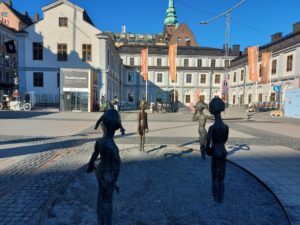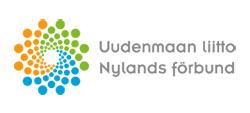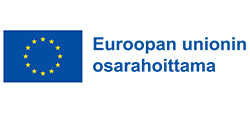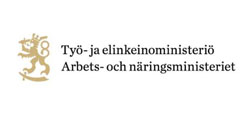One of the goals of the HEVi programme is to strengthen and to build international connections that support the funded projects and the effectiveness of urban development and experimental environments. This work in turn develops the international competitiveness of the Helsinki capital region.
The Nordic Smart City Network
In September 2022 I had the opportunity to participate to the Nordic Smart City Network meeting in Stockholm. The Nordic Smart City Network (https://nscn.eu/ ) is a collaboration initiative joined by five Nordic countries and twenty Nordic cities with a common goal: to explore the Nordic way to create livable and sustainable cities. All capital cities are presented in the network. A relevant common funding instrument is represented by Nordic Innovation (https://www.nordicinnovation.org/ ), which supports sustainable solutions, circular economy, digitalization, and innovation.

The goal of the Nordic Smart City Network meeting in Stockholm was to illustrate best cases of smart solutions from different cities in the Nordic countries, and potentially develop future project ideas together. All key dimensions of the concept of smart city were taken into consideration: smart living, smart governance, smart economy, smart mobility, smart environment, smart people. With increasing intensive urban development, which represents a challenge for modern cities, there is a growing need for innovative ways of managing the complexity of urban life.
Multifunctional urban development and the Slussen project
During the two-day meeting, I had the opportunity to familiarize with a best case of multifunctional urban development, the Slussen project. Slussen, which connects the old town and Södermalm has been for decades an important traffic junction, and now with the renovation it will serve a variety of purposes: preserving drinking water, preventing the risk of flooding, and providing more space for public transport, pedestrians and cyclists, as well as new meeting areas for citizens.

Smart City Stockholm
A key topic illustrated was the overview given on how Stockholm is developing as a smart and connected city. The strategy for Stockholm as a smart and connected city was decided in 2017 by City Council; in 2022 the strategy was replaced by the Quality program that includes digitalization, and innovation. Until now, there have two pre-requisite projects (IoT platform and sharing open data) and three development projects: 1) smart and connected lighting; 2) smart locks; 3) smart traffic management. Although at first sight the focus seems to lean on innovative technology (proof of concept, piloting level), Stockholm city is promoting the involvement of citizens in urban development process through the means of digital dialogues from the start of a urban project to its concrete implementation. A city can hardly become smart only by using technology, but it is key to take into account the needs and preferences of the inhabitants, as it was shown in other illustrated cases of digital citizen participation.
AI and sustainable buildings in Arhus, Denmark
Other relevant examples of different dimensions of smart city included sustainable buildings and circular economy; for instance, in the city of Arhus optimizing the use of buildings with Artificial Intelligence was illustrated. The project, based on primary schools, is to make savings on energy and climate consumption by grouping together activities, making intelligent room allocation, and increasing the degree of use of the municipal building stock by using building data, loT solutions and AI.
Hervanta Test bed
Last by not least, a relevant example of smart mobility was given by the Tampere testbed Hervanta (https://tamperetestbed.fi/ ), which serves as a test platform where scientifc communities, industry, the city and innovative companies operate at the joint intersection of research and business. The test platform offers companies to try out new intelligent traffic and automatic mobility services in a real environment. Tampere Testbed’s development work has benefited from several international projects, such as the STARDUST project. The goal of the STARDUST project is to explore the possibilities of autonomous transport as part of the public transport and to improve the digital twin as part of the Hervanta test area’ s ecosystem work.
The illustrated examples at the Nordic Smart City Network meeting show clearly that much work is being done in the Nordics as far as creating a multi-variant vision of smart city. Yet, the smart city concept needs a stronger emphasis on citizens as users and co-creators of smart cities.
In the next blog, we will learn more on the concept of smart city at the global level as the HEVi team attends the Smart City Expo World Congress in Barcelona (https://www.smartcityexpo.com/). Stay tuned!
Fulvio Rizzo,
HEVi team


